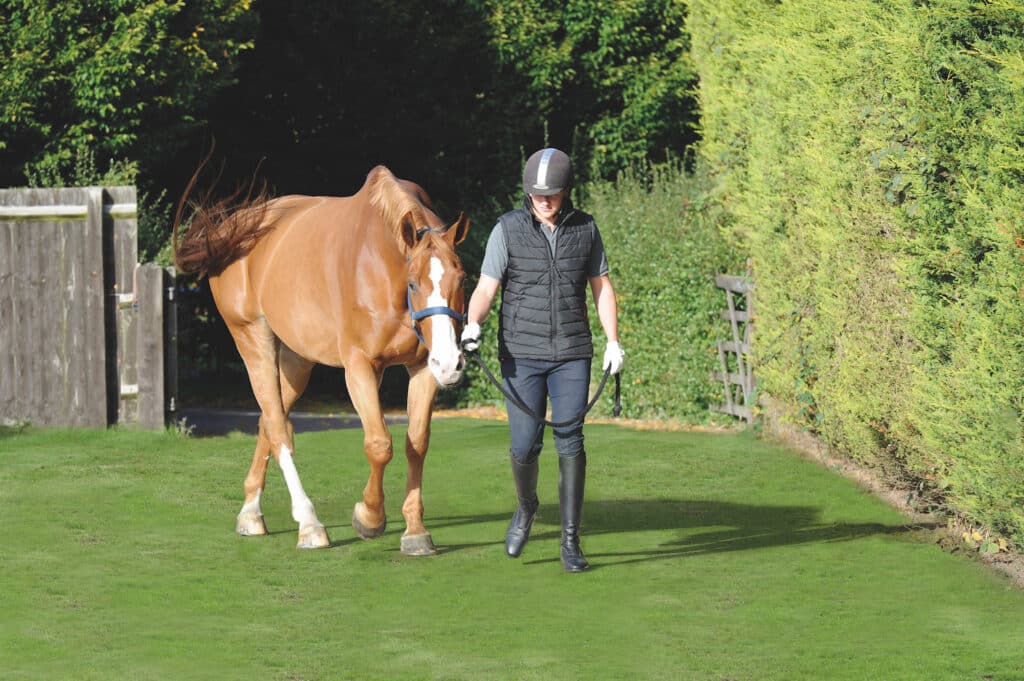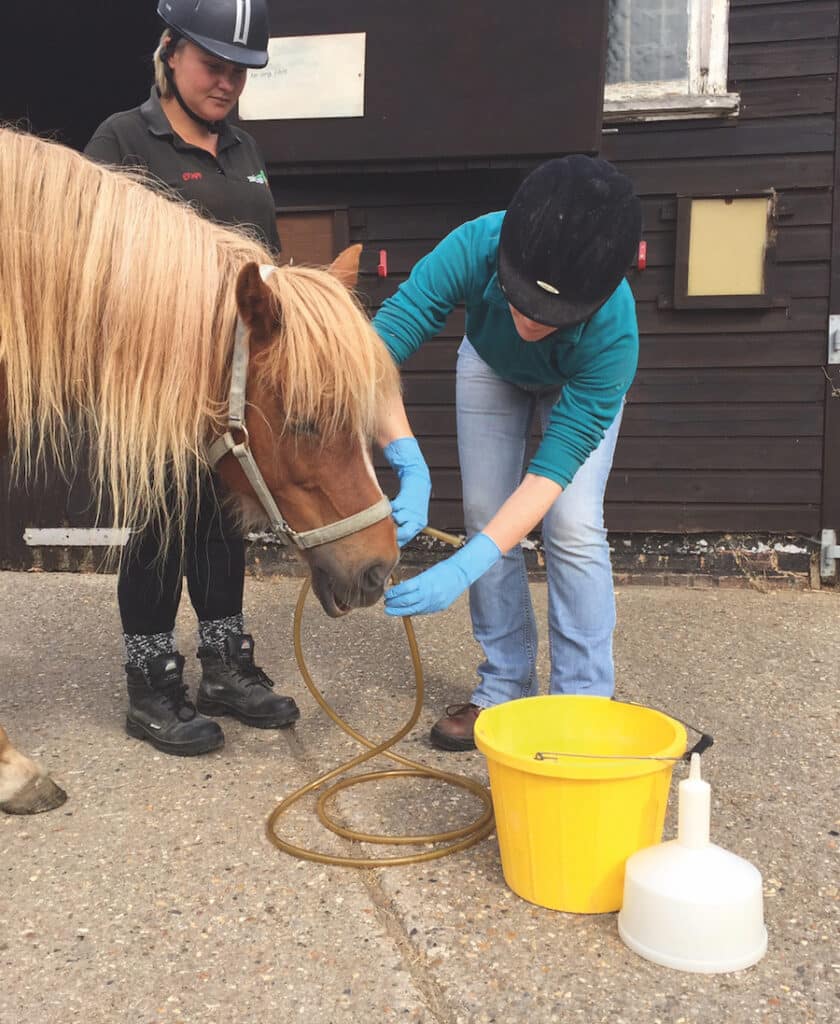Colic, Veterinary
Medical treatment of colic
Dr Emma Shipman, BVetMed DipACVIM Cert VA MRCVS, University of Nottingham Vet School & Oakham Veterinary Hospital, discusses the options
Medical management of colic encompasses all treatment options other than surgical exploration of the abdomen. The exact treatment will depend on the suspected cause of the colic signs, but will usually consist of feed restriction, pharmacological intervention (drugs), movement, and fluid therapy.
Withholding feed
Withholding feed is crucial until the normal motility of the intestine is restored. The act of eating is a potent neurohormonal stimulator of gut motility. If increased gut motility is already present, feeding will make the gut spasm worse. In the case of impaction colic, new feed will add to the impaction size until the impaction is resolved, increasing the pain associated with gut stretch. In cases where gut displacement is suspected, new gut contents will be unable to pass along the gastrointestinal tract and further add to gas accumulation when the gut contents ferment.
It is very important that horses cannot source other types of food during the period of feed restriction so bedding on straw is not recommended, or a muzzle can be used if this is not avoidable.
The time for which feed must be withheld will depend on the underlying cause of colic but, feed can usually be re-introduced when colic signs are resolved and, when any pain relief administered is no longer active, so signs of colic cannot be being masked.
Re-introduction of feed is usually undertaken by offering small amounts of the feedstuff to which the horse is accustomed, such as handful of hay/ haylage or in-hand grazing for a set period of time, gradually returning to full rations over a 24-48 hour period.
Pharmacological treatment (drugs)
Two main classes of drugs are usually employed in the management of colic. Pain relief is normally provided by use of non-steroidal anti-inflammatory drugs (NSAIDS). A wide variety of NSAIDS carry a product licence for use in horses with visceral (gut) pain. This drug class includes flunixin meglumine and phenylbutazone. These drugs are usually administered intravenously to provide a quick onset of pain relief. The second commonly used class of drugs are parasympatholytic drugs, which decrease gut motility. Hyoscine and butylscopolamine are drugs in this category and are again administered intravenously.
Movement
Encouraging movement may be helpful in the management of some causes of colic. This should never be undertaken in a horse with severe colic signs, who cannot be prevented from lying down/rolling, as they may injure themselves while doing so or, cause significant injury to the handler. Where colic signs are caused by impacted feed material of gaseous distension (stretching) of the gut, exercise may help movement of the impacted material and passage of trapped gas. The duration and intensity of the exercise should be at the guidance of the veterinary surgeon responsible for the horse.
WALKING IMAGE

Fluid therapy
Fluid therapy for management of colic on the yard usually consists of fluid given via a stomach tube to aid in the breakdown of impacted feed material within the gut. A stomach tube is a flexible rubber tube passed via one nostril through the throat and into the stomach, which allows rapid delivery of fluids. For an adult 500kg horse the capacity of the stomach is approximately 12-15 litres so around 6L of fluid may be delivered at any one time. The fluid administered may be an isotonic salt solution (Diarolyte for horses!), liquid paraffin or an osmotic agent such as magnesium sulphate (Epsom Salts), which work by pulling fluid into the intestine. Stomach tubes are generally well tolerated but can occasionally cause nasal bleeding when passed due to irritation of the very vascular lining of the nasal passage. Fluid may be administered on multiple occasions if required.

For further information on a wide range of issues related to colic visit
https://www.bhs.org.uk/our-work/welfare/our-campaigns/react
https://www.oakhamvethospital.co.uk
